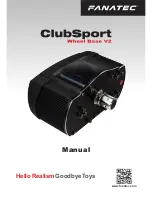
20 (E)
HKSP-R80
8-1-2. System Connection
Two possible systems using an S-BUS subnet controller are introduced here.
One is to extend the number of units to be controlled. Another is to separate the system for each subnet to
use the subnets in separate studios. If the system is separated into subnet systems, effects of updating a
program, disconnecting units, operation errors, etc. are limited to only the affected subnet within the
subnet system.
System to extend the number of units connectable
System setup is performed for a system including routing switcher control units connected to the S-BUS
subnet controller (the secondary station) with a control terminal connected to the primary station’s HKSP-
R80.
Primary station
Secondary station
REMOTE 1A
REMOTE1 A
REMOTE1 A
Routing switcher
Routing switcher
control unit
REMOTE3
(or DATA connector)
REMOTE1 B1, B2
REMOTE1 B1, B2
RS-232C (or Ethernet)
Control terminal
Routing switcher
control unit
Routing switcher
control unit
Routing switcher
control unit
Routing switcher
control unit
Routing switcher
control unit
Routing switcher
control unit
Routing switcher
control unit
Routing switcher
control unit
max.
253 unit
max.
253 unit
S-BUS
S-BUS
S-BUS
S-BUS
max.
253 unit
Signal processing unit
PFV-SP series
Routing switcher
controller
HKSP-R80
(with BZR-IF810 installed)
Routing switcher
controller
HKSP-R80
Signal processing unit
PFV-SP series
S-BUS subnet
controller
(HKSP-R80
+
BZR-IF810)
Secondary station
Signal processing unit
PFV-SP series
S-BUS subnet
controller
(HKSP-R80
+
BZR-IF810)
•
•
•
•
•
•
•
•
•















































